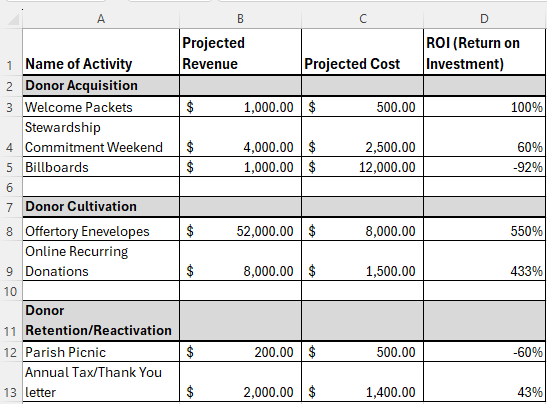Do you have a game
plan for your fundraising? Have you ever thought about your fundraising plan?
The reality is that, unless you are a brand new church or ministry, you have some kind of fundraising plan in place. Even if it’s only written on sticky notes around your computer screen. You already have some idea of how you’re going to try to raise the money that you need for your ministry.
How good is your plan? Is it working?
You need to take a sober look at your fundraising situation. Are you raising the money that you need to build the ministry you envision? That God wants you to build? If the answer is “No,” “Maybe,” or “Not Yet,” what are you going to do about it?
The Fundraiser’s Playbook was created with you in mind. Chances are, you have fundraising opportunities right under your nose that you’re not pursuing. Yet.
Your plan can always be improved.
If you have already have a fundraising plan, pull it out. If you don’t, now’s the time to start. Start by filling out the following basic form. You can pull out your budget and hopefully take much of this directly from the revenue numbers. You will need to get more detailed than your budget for this exercise, however, because you’re going to be looking at each of your fundraising activities rather than the different general buckets that your revenue budget contains.
If you don’t have a budget yet, this can be a good exercise to help you build one. By the way, I’m writing this with parishes specifically in mind, but it applies just as easily to church ministries or non-profits.
I’ve created a little spreadsheet that you can fill out to help you with this whole process. For a detailed explanation of ways to approach writing a fundraising plan, check out this article from the Fundraiser’s Playbook.
The return on investment in this spreadsheet is figured with this equation:
(Revenue – Cost) / Cost
This gives you a percentage return on every dollar you invest in your fundraising activities. 100% return means that every dollar invested produces one dollar of profit (revenue). Higher percentages are better, and you’ll notice that most of your higher ROI activities fall into the Donor Cultivation section. This is normal. Some activities have negative ROI, which means they cost more than they earn. For a parish picnic, that might be OK, but it might mean that you need to drop billboards if you think it’s going to be a money maker.

Use one line for each of the different fundraising programs you’re running. For instance, if you have a fall event that is a big fundraiser, put that on a separate line from your spring fun run. If you’re in a parish, put a separate line for each way you’re collecting offertory (passing the basket, online, kiosk in the narthex). Include the amount each fundraising activity is expected to raise, and how much you expect it to cost.
You’ll notice that there are three different sections on this plan: 1. Donor Acquisition, 2. Donor Cultivation, 3. Donor Retention/Reactivation. Sort your fundraising into these three different sections based on the following criteria:
Donor Acquisition: List those activities that convince people who are not giving to begin giving. Examples, sending out a welcome packet, offertory envelopes, adding marketing to your website to encourage people to give online.
Donor Cultivation: List those activities that encourage your current donors to continue giving. Examples include the weekly offertory basket, monthly direct mail cultivation, an annual stewardship campaign, or an annual paid event.
Donor Retention/Reactivation: List those activities that might not include a direct ask, but are more geared to keeping your donors happy. Examples might include thank you notes, saying thank you from the pulpit, annual donation receipts (with a thank you), annual financial status explanation, newsletter, or note in the bulletin from the pastor/ministry leadership.
You’ll notice in a column that will automatically calculate ROI based on the figures that you put in for each activity. This tells you the return on your investment. Learn more about cost effectiveness by reading this article from the Fundraiser’s Playbook here.
You should now have a simple but comprehensive snapshot of this year’s fundraising activities.
Now it’s time for some thoughtful analysis!
Now ask yourself some questions:
- What are you using to come up with the numbers? Historical performance? Hope? Fantasy? Do you have a reasonable justification for your expectations?
- How does this year’s revenue budget compare with last year’s? If you have projected any revenue increases, what are you doing to earn those increases?
- Am I investing the most time/money in activities that have a high return on investment?
- How much of your revenue are you planning to get from fundraising events? Do you notice that the return on investment for events is often much lower than for other forms of fundraising? (That’s because they cost a lot of time and money to put on.)
Knowing where you are is the first step in getting where you want to go.
Now you know where you are with your fundraising. In next week’s post, I’ll discuss what you can do with your Fundraising Activity Analysis to help you plan where you want to go.
Image courtesy of Pixabay.com, via Creative Commons License, no rights reserved.










